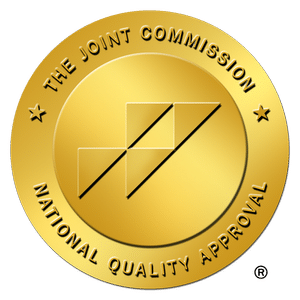Trauma and anxiety go hand-in-hand. Most of us will be exposed to trauma at some point in our lives. The issue however, is not the event itself, but our response to it, including prolonged anxiety. Understanding this connection can help knowing why this is so and what you can do to manage the often overwhelming symptoms of each. Read on to learn more.
Trauma and Anxiety Disorders: How They Overlap
In the DSM-5, the manual used by mental health professionals to classify mental illnesses, trauma is defined as exposure to actual or threatened death, serious injury, or sexual violence in one (or more) of the following ways [1]:
- Directly experiencing the traumatic event(s)
- Witnessing, in person, the event(s) as it occurred to others
- Learning that the traumatic event(s) occurred to a close family member or a close friend
- Experiencing repeated or extreme exposure to aversive details of the traumatic event(s)
Experiencing trauma may also mean experiencing anxiety in different ways, ranging from constant worries to severe panic attacks. Trauma can disrupt your sense of safety and well-being. When you experience trauma, your brain’s natural stress response can become stuck in “survival mode,” leaving you constantly feeling alert, anticipating danger, and feeling anxious.
This ongoing state can be expressed as persistent anxiety, even long after the traumatic event has passed.
How Does Trauma Affect the Nervous System?
When the brain encounters danger it signals to the body to protect itself, in an adaptive response to actual danger. On encountering a traumatic event, the body initiates a “fight, flight, or freeze” response, releasing the hormone cortisol and the neurotransmitter norepinephrine.
Cortisol mobilizes glucose (sugar) for the body to use as fuel to fight or run away. Norepinephrine promotes alertness and vigilance. The body has a heightened response to stress, especially in someone who is traumatized, particularly if the trauma happened at a young age. With the heightened stress of trauma, it’s possible for someone to respond to environmental cues that are not actually dangerous.
The areas of the brain most involved during and after a traumatic experience are the amygdala (fear center), hippocampus (memory center), and prefrontal cortex (executive function and cognitive control center) [1].
Can One Disorder Lead to the Other?
Yes. Trauma can cause anxiety when it maintains the brain in a heightened state of vigilance, which makes it difficult to distinguish between past and present threats.
While not all those who experience trauma will develop an anxiety disorder, trauma can increase the risk of developing conditions such as generalized anxiety disorder (GAD), panic disorder, social anxiety, or post-traumatic stress disorder (PTSD).
The amygdala, responsible for detecting threats, can become hyperactive after trauma, leading to an exaggerated “fight, flight, or freeze” response.
Trauma can make it harder to regulate emotions and increases the likelihood of anxiety symptoms by disrupting normal coping mechanisms. Triggers (reminders of the trauma) can bring about the same intense anxiety as the original event, even if the threat is no longer present.
Recognizing the Symptoms of Trauma and Anxiety
It’s helpful to recognize the symptoms of trauma and anxiety as a guide to your own self-care or treatment.
Somatic and Emotional Symptoms of Trauma
Symptoms of trauma-induced anxiety may include [2] [3]:
| Somatic (Body) | Emotional |
| Rapid heartbeat and chest tightness | Intrusive thoughts |
| Sweating | Flashbacks and re-experiencing |
| Physical tension | Nightmares |
| Unhealthy changes in appetite | Hypervigilance |
| Aches and pains | Avoidance behaviors |
| Tiredness, low energy | Emotional numbness |
| Irritable Bowel Syndrome (IBS) – bloating, diarrhea, constipation | Dissociation |
| Acid reflux and ulcers | Mood swings |
| Shortness of breath | Feelings of shame or guilt |
| Headaches or migraines | Despair and hopelessness |
| Numbness of extremities | Poor concentration and attention |
| Sleep disorders | Substance misuse |
| Chronic fatigue | Social withdrawal |
| Feeling out of body | Depression |
How Long Does Trauma Normally Last?
There are many variables which affect the duration of trauma. It doesn’t always fully disappear, but can become manageable. Many people reach a point where memories no longer trigger intense physical or emotional reactions. Some people find new strength, purpose, or empathy after trauma. Generally speaking, the following durations occur:
Acute Trauma (Short-Term Stress Response):
- Duration: Days to weeks
- Most recover within a month
Post-Traumatic Stress Disorder (PTSD):
- Duration: Months to years (if untreated)
- Recovery with treatment in 3-6 months
- Recovery without treatment trauma responses can last years or decades
Complex PTSD (C-PTSD):
- Duration: Often years or lifelong (without intervention)
- Recovery with therapy over 1 to 5+ years
- Recovery without treatment symptoms may persist indefinitely
Developmental Trauma (Childhood Trauma):
- Duration: Can affect a lifetime due to brain rewiring
- Recovery: with long-term therapy
Types of Anxiety Disorders
Anxiety disorders differ from normal anxiety in their intensity, duration, and impact on daily life. Typically they involve excessive fear, worry, and avoidance behaviors. Here are the main types [4]:
- Generalized Anxiety Disorder (GAD): Chronic, excessive worry about everyday life (health, work, relationships)
- Panic Disorder: Recurrent, unexpected panic attacks (intense fear with physical symptoms)
- Social Anxiety Disorder (Social Phobia): Intense fear of social situations due to fear of judgment
- Specific Phobias: Irrational fear of a specific object/situation (e.g., heights, spiders, flying)
- Agoraphobia: Fear of situations where escape might be difficult (e.g., crowds, public transport)
- Separation Anxiety Disorder: Excessive fear of being apart from attachment figures (common in children but can persist in adults)
- Selective Mutism: Inability to speak in specific social settings (e.g., school) despite speaking normally elsewhere
How to Heal from Trauma and Anxiety
Healing from both trauma and anxiety is best done with a combination of medication where appropriate, self-care, and therapy.
Medication for Trauma and Anxiety Explained
There is a variety of medications that may be prescribed, including [5] [6]:
1. Selective Serotonin Reuptake Inhibitors (SSRIs): Commonly prescribed for: PTSD, Generalized Anxiety Disorder (GAD), Panic Disorder, Social Anxiety. It increases serotonin levels, improving mood and reducing hyperarousal. Time to Work: 4–6 weeks. Side Effects: Nausea, insomnia, sexual dysfunction
2. Serotonin-Norepinephrine Reuptake Inhibitors (SNRIs): Commonly prescribed for PTSD, GAD, and chronic pain from trauma. It boosts serotonin and norepinephrine (helps with focus and energy). Side Effects: Increased blood pressure, sweating, dizziness
3. Benzodiazepines (Short-Term Use Only): Commonly prescribed for: Acute panic attacks, severe anxiety (not long-term PTSD). It enhances GABA (a calming neurotransmitter) for fast relief. Risks: Dependence, memory issues, withdrawal symptoms. Emergency use only (not daily/long-term)
4. Atypical Antipsychotics (For Severe Cases): Commonly prescribed for: PTSD with dissociation, treatment-resistant anxiety. They modulate dopamine and serotonin. Side Effects: Weight gain, metabolic issues, sedation
5. Prazosin (For PTSD Nightmares): Commonly prescribed for: Trauma-related nightmares and sleep disturbances. Blocks adrenaline, reducing night terrors. Side effects: Dizziness (especially when standing)
6. Beta-Blockers (For Physical Anxiety Symptoms): Commonly prescribed for: Performance anxiety, PTSD hyperarousal. Reduce adrenaline effects (shaking, rapid heart rate). Use case: Taken before stressful events (speeches, triggers)
7. NMDA Antagonists (Emerging PTSD Treatment): Example: Ketamine (IV or nasal spray)
Rapidly reduces depressive/anxiety symptoms by affecting glutamate for severe, treatment-resistant PTSD and depression
Key Considerations When Taking Medication:
- Not a Standalone Cure: Works best with therapy (CBT, EMDR, somatic therapy).
- Side Effects Vary: Some cause weight gain, fatigue, or emotional blunting.
- Withdrawal Risks: Never stop abruptly (especially SSRIs/SNRIs/benzodiazepines).
- Personal Fit: Some people respond better to certain meds—trial and error is normal.
Traditional and Emerging Treatments for Trauma and Anxiety
There are several evidence-based treatments predominantly used to treat trauma and anxiety: CBT, DBT, and EMDR. Ketamine-assisted therapy is an emerging treatment that shows promise as well.
CBT
Cognitive Behavioral Therapy (CBT) is a structured, evidence-based approach to treating trauma and anxiety by addressing maladaptive thoughts and behaviors. For trauma, CBT—particularly Trauma-Focused CBT—helps individuals process traumatic memories, challenge distorted beliefs (e.g., self-blame), and reduce avoidance behaviors. Exposure techniques may be used to gradually confront trauma-related triggers safely.
For anxiety, CBT identifies and restructures irrational or catastrophic thoughts (e.g., “I’ll fail”) that fuel worry. Behavioral strategies, like exposure therapy, help clients face feared situations to reduce avoidance and build confidence. Skills training (e.g., relaxation, problem-solving) equips individuals to manage symptoms.
Both applications emphasize psychoeducation, homework (e.g., thought records), and collaborative goal-setting. By modifying cognitive and behavioral patterns, CBT empowers clients to regain control, reduce distress, and improve functioning in 12 to20 sessions. Its adaptability makes it effective for PTSD, phobias, and generalized anxiety.
DBT
Dialectical Behavior Therapy (DBT) is a cognitive-behavioral approach originally developed for borderline personality disorder but now widely used for trauma and anxiety. It combines acceptance and change strategies, teaching four core skills:
- Mindfulness: Staying present and reducing emotional reactivity.
- Distress Tolerance: Managing crises without harmful behaviors.
- Emotion Regulation: Reducing emotional intensity and vulnerability.
- Interpersonal Effectiveness: Assertive communication and boundary-setting.
For trauma, DBT helps stabilize emotions before processing traumatic memories, reducing self-destructive coping (e.g., self-harm). For anxiety, it teaches grounding techniques and acceptance of discomfort while reducing avoidance.
DBT includes individual therapy, skills training groups, and phone coaching for real-time support. Its balanced focus on validation and skill-building makes it effective for complex trauma (e.g., PTSD) and chronic anxiety disorders, particularly when emotional dysregulation is prominent.
EMDR
Eye Movement Desensitization and Reprocessing therapy (EMDR) is a structured therapy that focuses on processing memories. It encourages the patient to focus briefly on the trauma memory while simultaneously experiencing bilateral stimulation (typically eye movements or tones), which is associated with a reduction in the vividness and emotion associated with the trauma memories [7].
Unlike many types of therapy, such as CBT, EMDR does not require talking in detail about the distressing issue or completing homework between sessions. Rather than focusing on changing the emotions, thoughts, or behaviors resulting from the distressing issue, EMDR allows the brain to resume its natural healing process.
EMDR therapy is designed to resolve unprocessed traumatic memories in the brain. When distress from a disturbing event remains, the upsetting images, thoughts, and emotions may create an overwhelming feeling of being back in that moment, or of being “frozen in time.” EMDR therapy helps the brain process these memories, and allows normal healing to resume. The experience is still remembered, but the fight, flight, or freeze response from the original event is resolved.
Ketamine-Assisted Therapy
Ketamine-Assisted Therapy (KAT) is an emerging treatment for trauma and anxiety that combines low-dose ketamine—a dissociative anesthetic with rapid antidepressant effects—with psychotherapy. Administered under medical supervision (via IV, lozenge, or nasal spray), ketamine induces a temporary altered state that can reduce defensive barriers, allowing deeper emotional processing.
For trauma, KAT helps disrupt rigid negative thought patterns (e.g., shame, hopelessness) linked to PTSD while enhancing neuroplasticity for new coping strategies. For anxiety, it provides rapid relief from symptoms, often within hours, unlike traditional medications.
Therapy sessions before and after dosing integrate psychodynamic, somatic, or mindfulness techniques to reinforce insights. KAT is particularly effective for treatment-resistant cases, offering a “window of opportunity” for therapeutic breakthroughs.
Potential risks (e.g., dissociation, blood pressure changes) require careful screening and professional oversight. Typically delivered in 3–6 sessions, KAT shows promise for rapid, transformative healing.
Trauma-Informed Treatment at Corner Canyon: What To Expect
Treatment for mental health conditions and trauma is available in Utah. Are you or a loved one looking for a compassionate space to heal from anxiety, trauma, PTSD, CPTSD, other mental health conditions, or addictions? Our licensed trauma-informed professional therapists and counselors at Corner Canyon Health Centers can provide compassionate help using a range of therapeutic and holistic techniques.
Reach out to our Admissions team now at Corner Canyon. We’re in a peaceful setting bordered by the beautiful Wasatch Mountains.

Sources
[1] Trauma. Anxiety and Depression Association of America.
[2] Center for Substance Abuse Treatment (US). Trauma-Informed Care in Behavioral Health Services. Rockville (MD): Substance Abuse and Mental Health Services Administration (US); 2014. (Treatment Improvement Protocol (TIP) Series, No. 57.) Chapter 3, Understanding the Impact of Trauma.
[3] The Relationship Between Trauma and Anxiety. 2021. Khiron Clinics.
[4] What Are Anxiety Disorders? 2023. American Psychiatric Association.
[5] Holtzheimer, D., et al. 2023. Clinician’s Guide to Medications for PTSD. US Department of Veterans Affairs.
[6] Garakani, A. et al. (2020). Pharmacotherapy of Anxiety Disorders: Current and Emerging Treatment Options. Frontiers in psychiatry, 11, 595584.
[7] EMDR Therapy. 2022. Cleveland Clinics.












